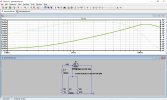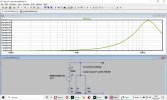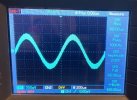@pma, I agree in regard to some due distance between the noise originating in the pickup/amp aggregate in comparison to the surface noise of masterly pressed and new records, weighing in noise from microphones, tape (we're analog) and mixing consoles and tape overlay and cutting (even more analog) and ... . It could be expressed as a noise figure also ;-)Yes I will. I found 2 pcs of NE5534 in my stock. They should be good because of their quite low current noise. I think that SNR with cartridge should be at least 70 dB not to affect the best vinyl presses. SNR calculated as 20log(500mV)/total noise). 500mV as 5mV x 100 (Openamp gain at 1kHz).
It's a pitty that 7kHz is a quite promiment frequency range when it comes to noise, see the D-weighting curve. (wiki: "The large peak in the D-weighting curve is not a feature of the equal-loudness contours, but reflects the fact that humans hear random noise differently from pure tones, an effect that is particularly pronounced around 6 kHz. This is because individual neurons from different regions of the cochlea in the inner ear respond to narrow bands of frequencies, but the higher frequency neurons integrate a wider band and hence ..."). We may want to adopt to it additionally.
But what do you think of switching to noise figures once the signal generator's contribution, its thermal noise is evaluated? Alas, I can't do that, because my very old LTSpice doesn't support the needed calculations.



